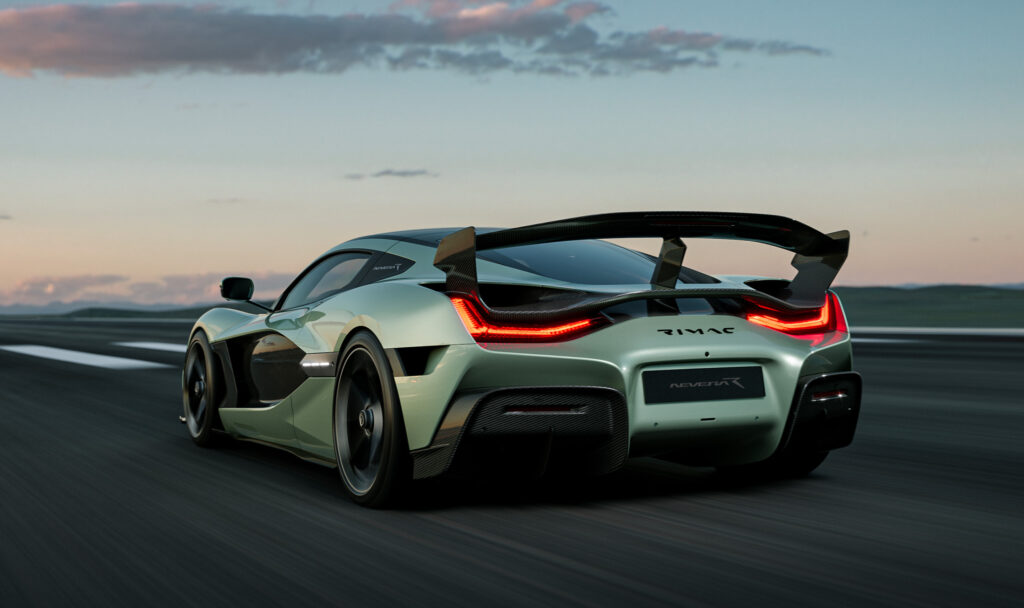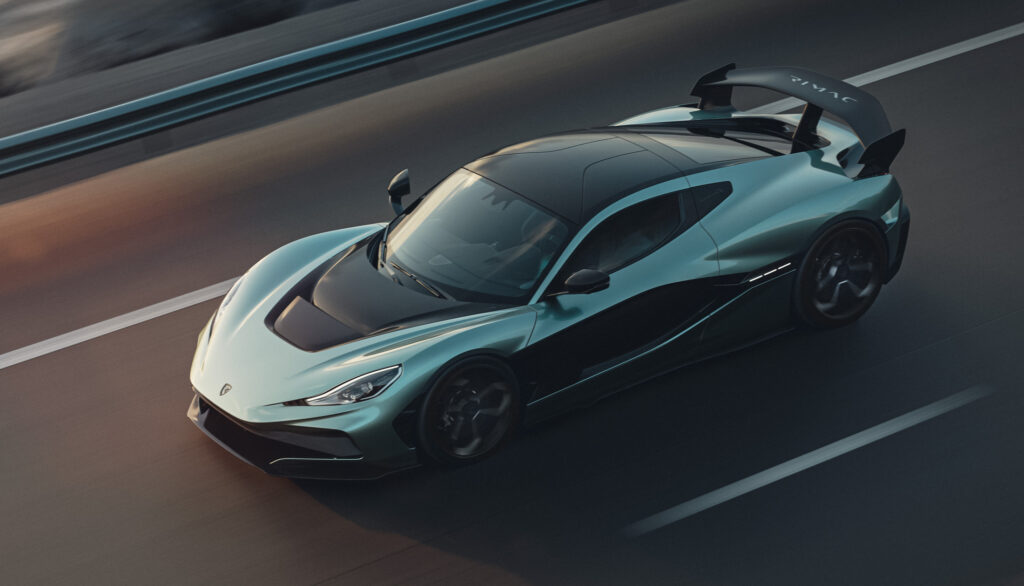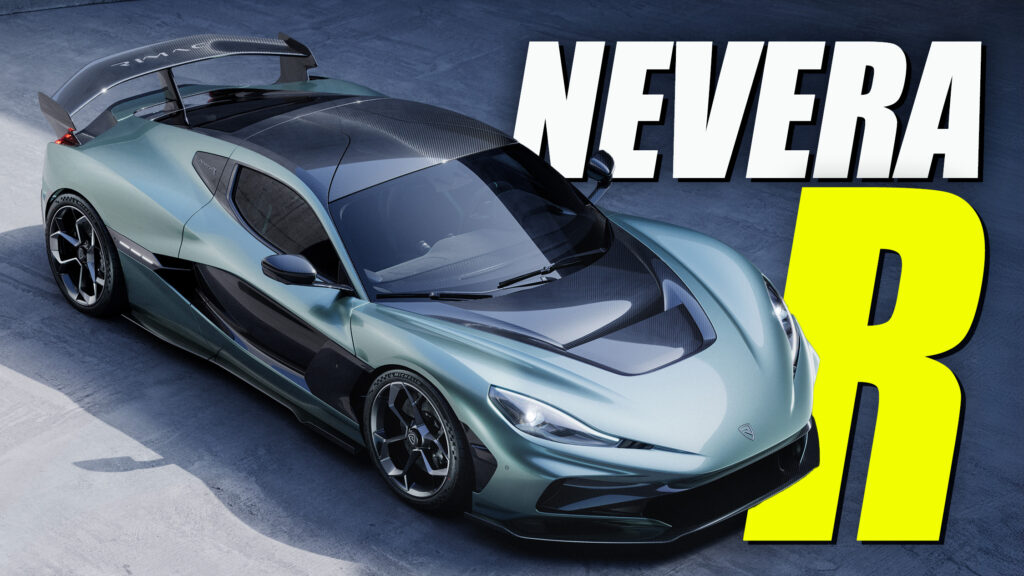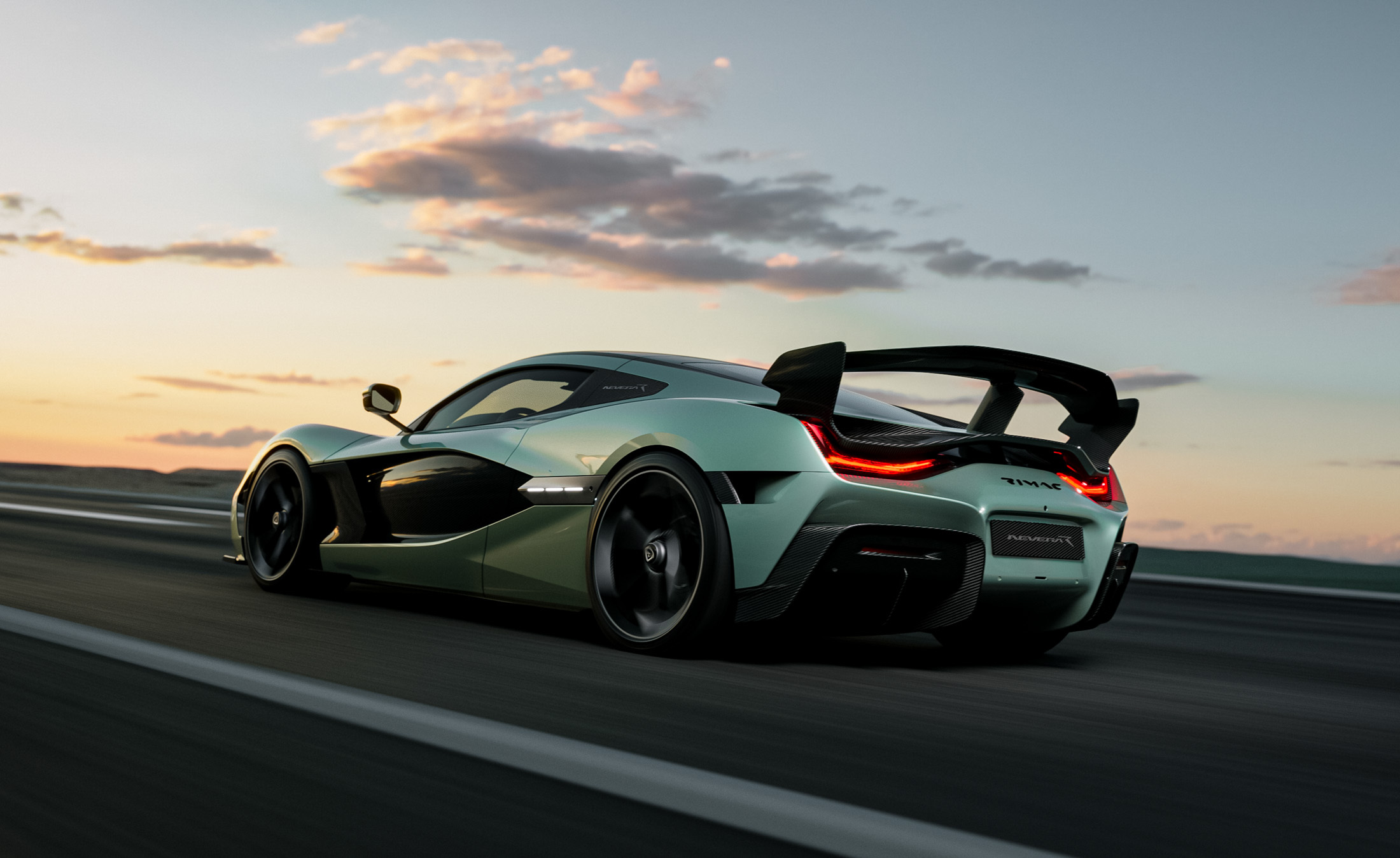- Rimac has unveiled the $2.53M-plus-taxes Nevera R, with production capped at 40 units.
- The quad-motor powertrain gains 100 hp for a total of 1,989 hp and helps cut the 0-186 (300 kmh) time from 9.22 to 8.66 seconds.
- Sticky Michelin Cup 2 tires, additional negative camber, and extra downforce reduce understeer by 10 percent.
The Rimac Nevera has already proved its straight-line worth by setting a bunch of acceleration records. Now, the Croatian firm has come up with a handling-focused Nevera R variant to prove the electric hypercar is more than a one-trick, 2,000-horse pony.
Unveiled today at Monterey Car Week in California after an intensive teaser campaign on Instagram that had some commenters speculating that Rimac was going to unleash an all-new hybrid hypercar, the less-radical reality is a Nevera R that is lighter and more powerful than the stock Nevera. It’ll also be an even rarer sight because production is capped at just 40 units, and predictably, it’s more expensive. We hear the R will cost €2.3 million ($2.53 m) plus taxes, up from €2 million ($2.2 m) for the base car.
Related: Rimac Turns 15 And Celebrates With $2.5M Copper Nevera Special
Your extra $300k buys a Nevera whose quad-motor powertrain has been boosted from 1,889 hp (1,914 PS) to 1,989 hp (2,017 PS) and Rimac has also fitted a new 108 kWh battery (down from 120 kWh). Those mods work together with a 35 kg (77 lbs) weight reduction (to a still-outrageous 2,277 kg / 5,020 lbs) to help slice a few tenths from the existing EV’s already insane acceleration stats.
Despite sticky Michelin Pilot Sport Cup 2 tires replacing Pilot Sport 4S rubber, there’s no change to the 1.74-second and 1.81-second 0-60 mph and 0-100 km/h times respectively. But from that point on, the R pulls ahead. The 0-124 mph (200 km/h) run is shaved from 4.42 to 4.38 seconds and the 0-186 mph (300 km/h) sprint shrinks from 9.22 to 8.66 seconds.
Top speed is limited to 217 mph (350 km/h) by default, but the automaker will unlock the same 256 mph (412 km/h) capability that the regular car delivers at Rimac-run speed events.
So the R saves a few tenths and hundredths here and there, but the Nevera is already so brutally fast we doubt the R’s organ-squish rate will feel much different. Where the new model promises to move the game on is when you need to shed some of that speed or point it in a new direction.
“When we developed the Nevera, an important part of the brief was that it should be a Grand Tourer – we made sure it was spacious, comfortable and finely balanced between thrilling and accessible,” CEO Mate Rimac explains.
“But we’re relentlessly tweaking to customers’ desires, and many were looking for a car that really emphasized the Nevera’s cornering ability.”
More aero, less understeer

The Cup 2 tires we’ve already mentioned are wrapped around 20-inch front and 21-inch rear wheels on the R, whereas the stock Nevera features 20s at each corner. Rimac has also upgraded the carbon brakes with a silicone matrix layer, modified the torque-vectoring software, and increased the amount of negative camber to cut understeer by 10 percent.
And to ram those tires into the pavement to squeeze every drop of grip out of them, Rimac’s engineers added a fixed rear wing and a new diffuser. It claims downforce is improved by 15 percent to deliver 400 kg (882 lbs) of push at 217 mph (350 kmh), aerodynamic efficiency is up by 10 percent, and lateral grip by 5 percent. The upshot is a 3.8-second reduction in the time it takes to lap the handling track at Porsche’s Nardo test track in southern Italy.
And that’s a moderately short course at 3.86 miles (6.22 km). We fully expect Rimac to have another crack at setting another lap time at the 12.8-mile (20.8 km) Nurburgring lap, where it ought to decimate the base Nevera’s 7:05:298 time recorded last year.
New clamshell hood

The new rear wing and wheels are two big clues that you’re looking at a Nevera R and not a standard Nevera, but they’re not the only giveaways. Rimac has replaced the entire front end with a bigger clamshell hood that makes the R look wider, lower, and more modern.
Mate Rimac previously admitted that he was struggling to fill the Nevera’s 150 build slots because buyers at this price level want ICE-powered hypercars. The R – whose 40-unit run is part of the 150 total – has no answer to that preference for screaming combustion engines, but it might deliver a more raw and emotional driving experience that could persuade a few more wealthy enthusiasts to add an electric hypercar to their already ICE-heavy fleets.




















































